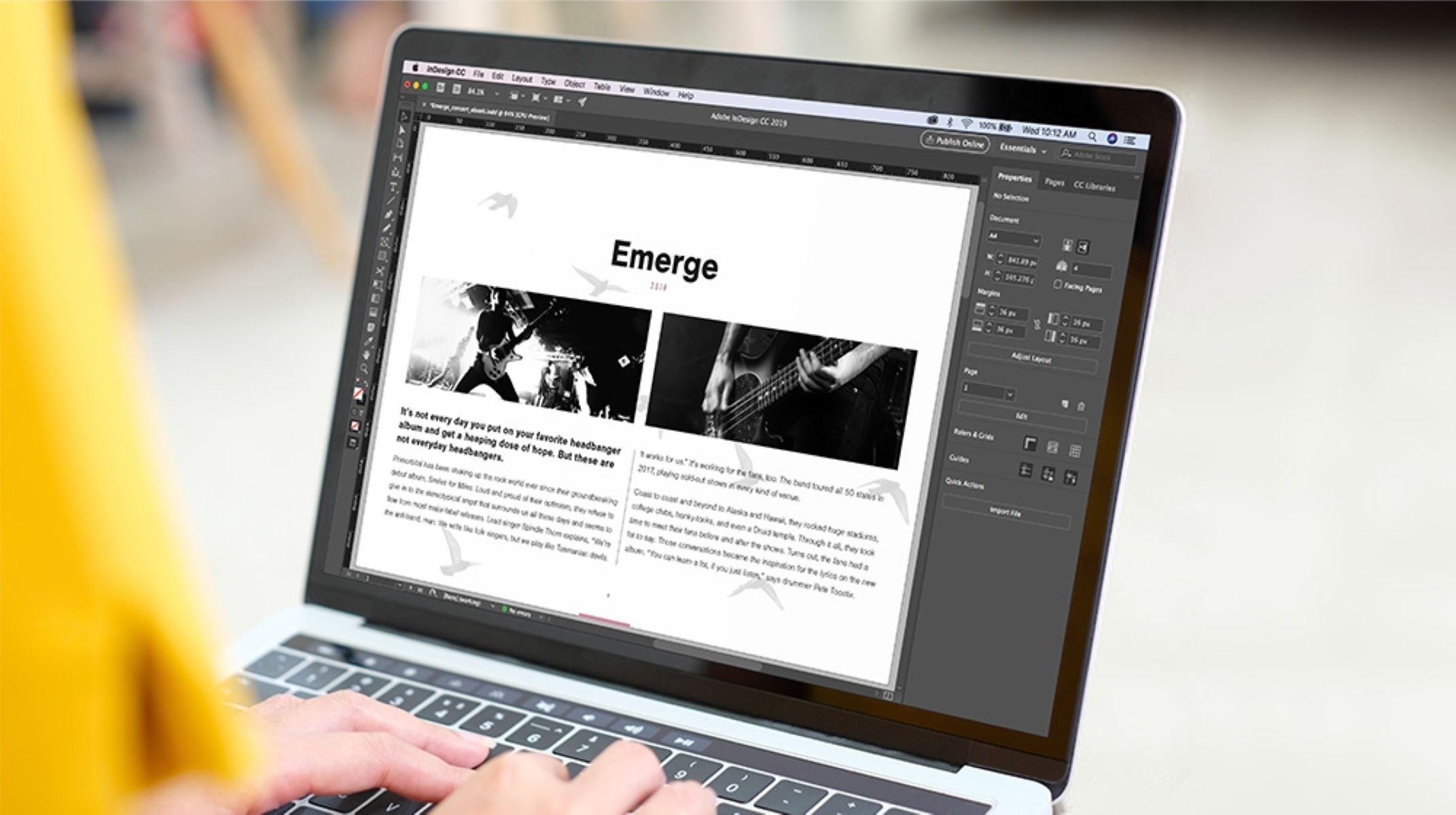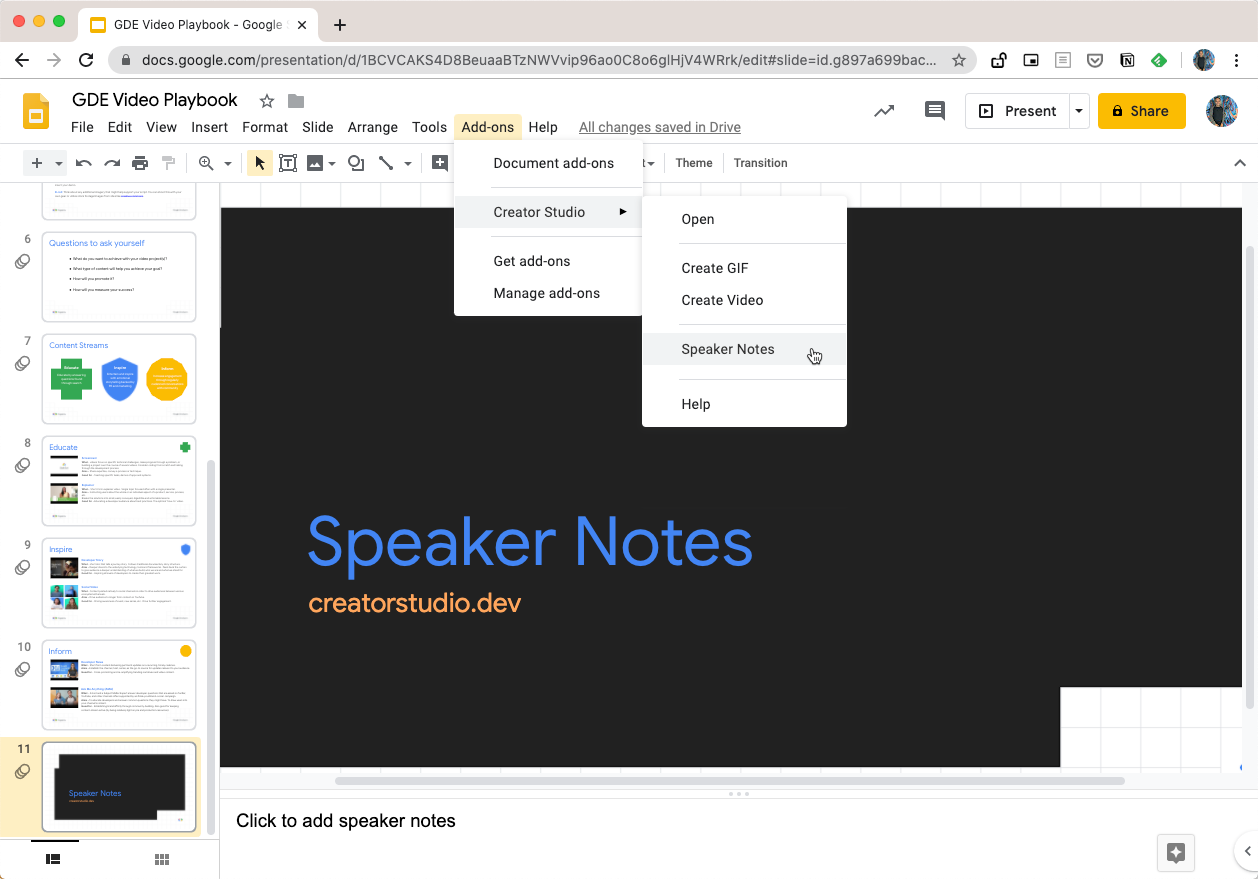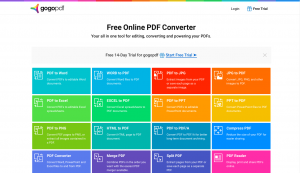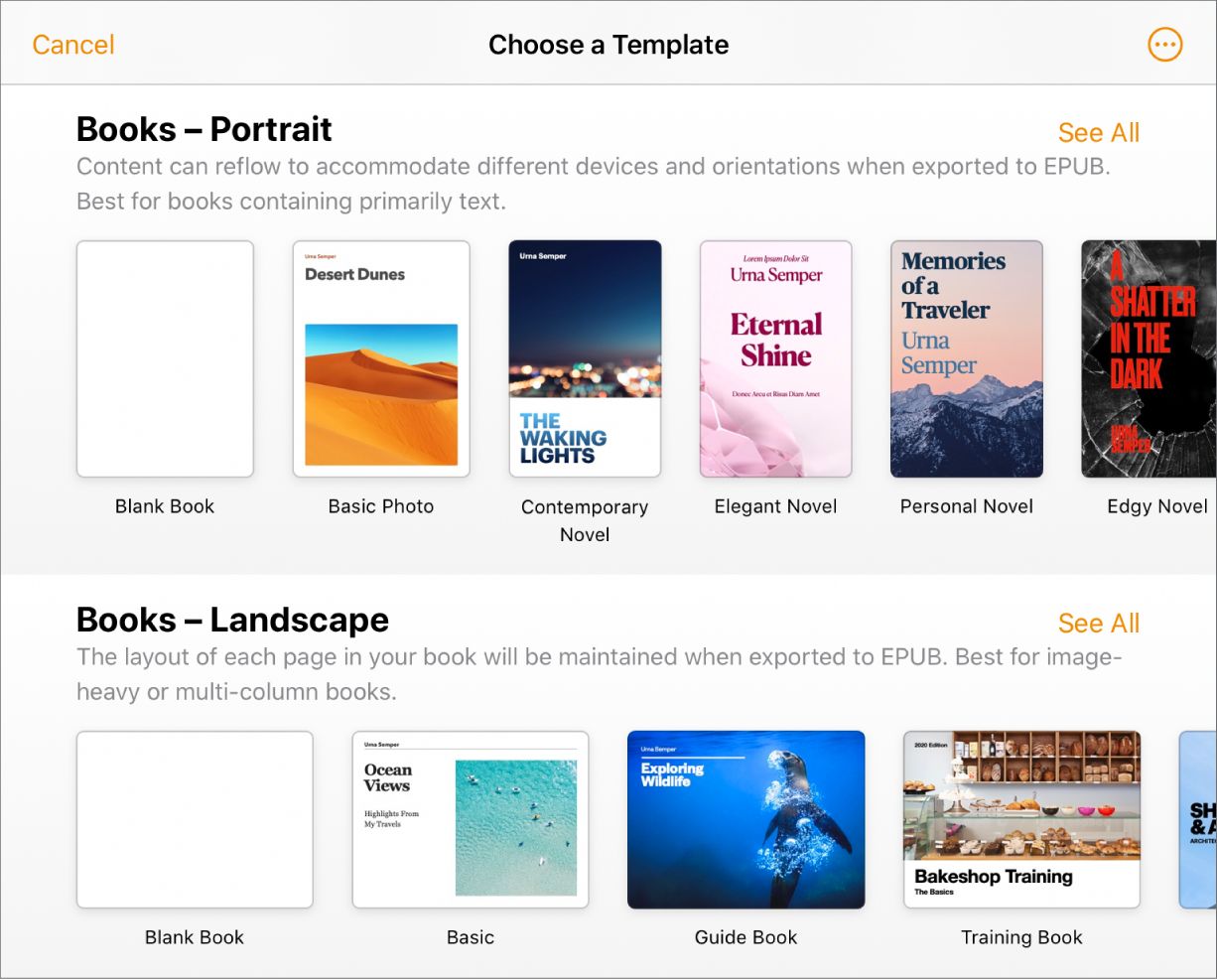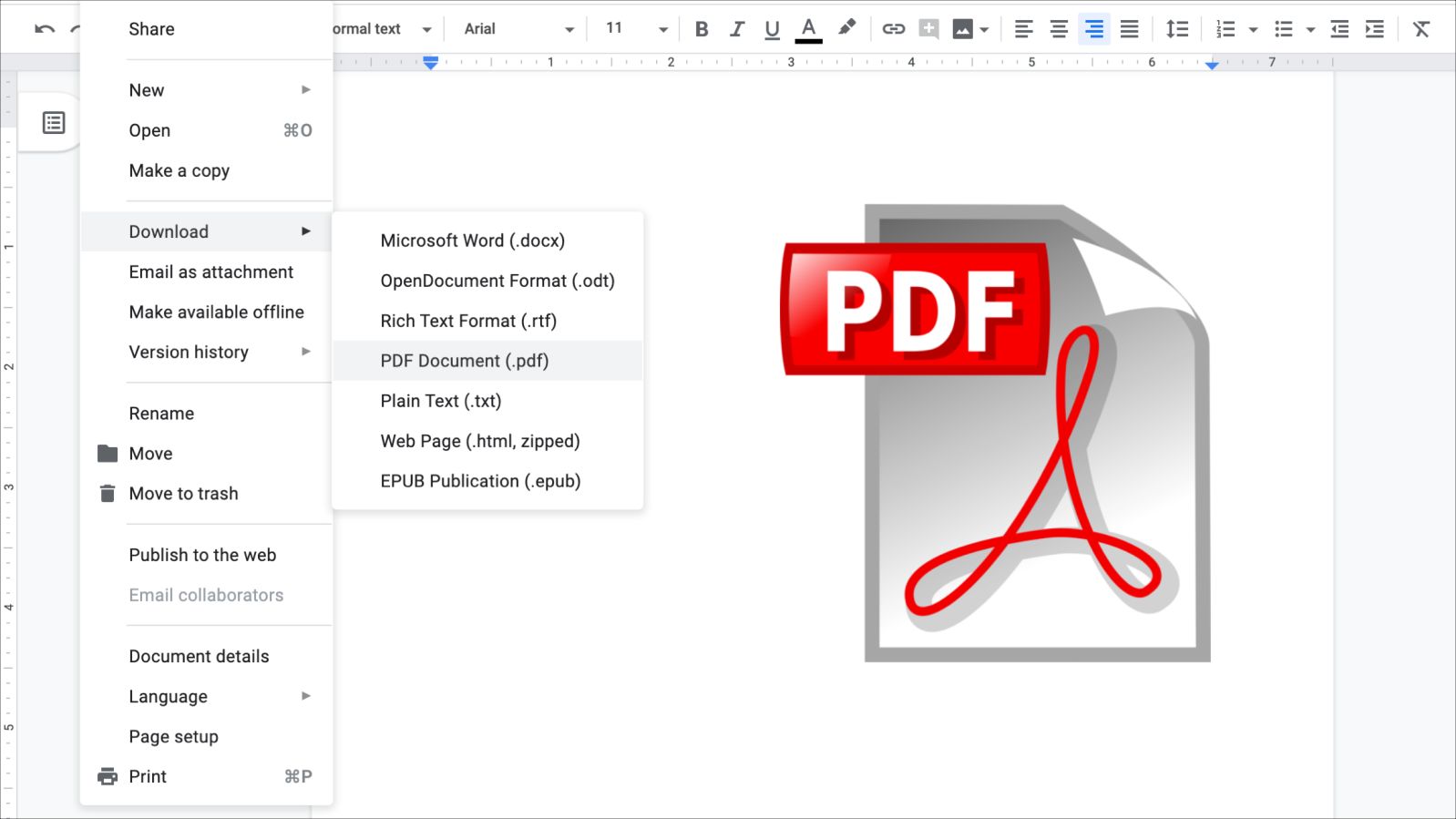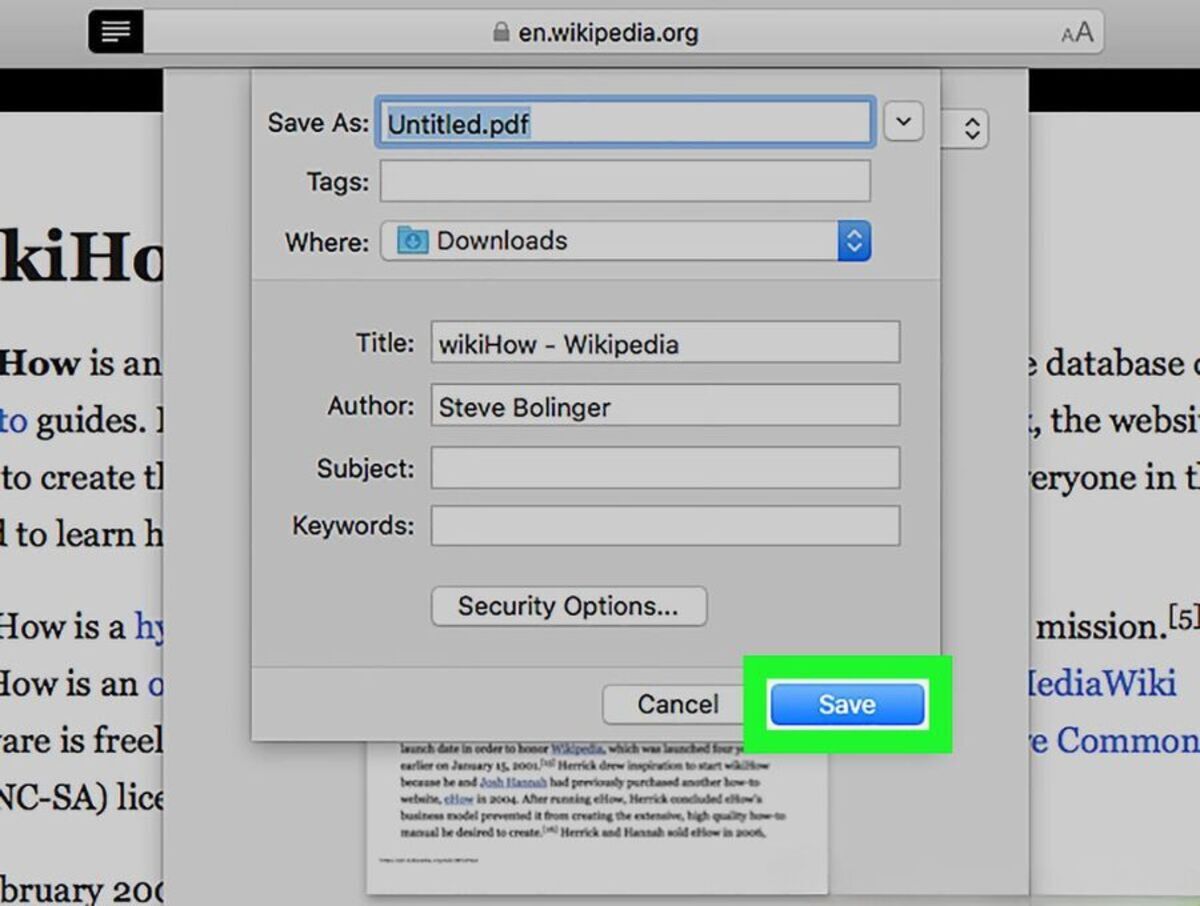Introduction
Embedding a PDF in an email can be a convenient and professional way to share important documents with recipients. Whether you need to send a client proposal, a company brochure, or a detailed report, incorporating a PDF into your email can ensure that the recipient has easy access to the information you want to share. In this article, we will explore various methods to embed a PDF in an email.
When it comes to embedding a PDF in an email, it’s important to consider the capabilities of the email client that will be used to view the email. Different email clients have different compatibility and rendering capabilities, so it’s essential to choose the right method that will work well across multiple platforms and devices.
One common approach is to convert the PDF document into an image format. This ensures that the document is viewable regardless of the email client’s compatibility with PDFs. Another method involves using HTML coding to embed the PDF directly into the email. This allows the recipient to view the PDF within the email itself, without the need to open any external links or attachments.
In this article, we will cover three popular cloud storage platforms—Google Drive, Dropbox, and OneDrive—and explain how to use each platform to embed a PDF in an email. These platforms offer convenient ways to host and share files, and they provide features that allow you to embed the PDFs in your emails easily.
Before we dive into the different methods, it’s important to note that testing the embedded PDF is crucial. You should thoroughly review the email with different devices, operating systems, and email clients to ensure that the recipient will have a seamless experience when accessing the embedded PDF.
In the following sections, we will guide you through the step-by-step process of embedding a PDF using different methods, allowing you to choose a technique that best suits your needs and preferences.
Choosing the Right Email Client
When it comes to embedding a PDF in an email, it is crucial to consider the email client that your recipients will be using. Different email clients have varying levels of compatibility and support for the embedding of PDF files. By selecting an email client that supports PDF embedding, you can ensure that your recipients can view the PDF seamlessly without any issues.
Some popular email clients, such as Gmail, Outlook, and Apple Mail, offer excellent support for embedding PDFs. These clients allow recipients to view the embedded PDF directly within the email interface, providing a convenient and hassle-free experience. However, it’s essential to test the email across various email clients to ensure compatibility and optimal viewing experience.
If you are unsure about the email clients your recipients commonly use, it is recommended to choose a method that is universally compatible across all email clients and devices. In this case, converting the PDF document into an image format can be an effective solution. Most email clients have no issues displaying images in emails, making it a reliable fallback option for ensuring that your PDF content is accessible.
When selecting the right email client, consider the technological capabilities and compatibility of your target audience. Research the preferences and email usage patterns of your recipients to gain better insights into their preferred email clients. By understanding the preferences of your audience, you can tailor your approach to maximize compatibility and ensure that your embedded PDF is accessible to as many recipients as possible.
It is worth noting that different email clients may have different limitations or restrictions when it comes to embedded content. For example, some email clients may block images or external content by default for security reasons. In such cases, it may be necessary to inform your recipients to enable images or allow external content to ensure they can view the embedded PDF properly.
Additionally, keep in mind that emails are often accessed on various devices, including smartphones, tablets, and laptops. Ensure that the email client you choose supports responsive design, which allows the email and embedded PDF to adapt and display correctly on different screen sizes, ensuring an optimal viewing experience for recipients across all devices.
By carefully selecting the right email client and considering the technological capabilities and preferences of your target audience, you can ensure a smooth and seamless experience when embedding a PDF in an email.
Converting the PDF into an Image
Converting a PDF into an image format is a practical solution for embedding PDFs in emails, as most email clients have excellent support for displaying images. By converting the PDF into an image, you can ensure that the recipient will be able to view the content seamlessly, irrespective of the email client or device they are using.
To convert a PDF into an image, there are various methods and tools available. One popular option is to use Adobe Acrobat Pro, which allows you to easily export a PDF file as an image. You can select the desired pages, adjust the image quality, and save the PDF as a JPEG, PNG, or TIFF image format. This method preserves the visual integrity of the PDF and ensures that the embedded image retains its clarity.
If you don’t have access to Adobe Acrobat Pro, there are alternative solutions available online. Several websites offer PDF to image conversion services, where you can upload your PDF and receive the converted images in a downloadable format. These online tools are convenient and user-friendly, making it easy for anyone to convert a PDF into image files.
When converting a PDF into an image, it is important to consider the resolution and image quality. Aim for a resolution that strikes a balance between file size and image clarity. This will ensure that the embedded image is not too large to load quickly, while still providing a clear and readable representation of the PDF content.
Once you have the converted image files, you can simply embed them into your email as you would with any other image. Most email clients have a straightforward process for inserting images into emails, either through the use of an attachment or by copying and pasting the image directly into the email body.
Keep in mind that when using this method, the recipient will only be able to view the PDF content as an image. They won’t have the ability to interact with the document or search for specific text within the PDF. However, for simple presentation of information or visual content, converting the PDF into an image can be an effective and compatible solution when embedding a PDF in an email.
Remember to test the email with different email clients and devices to ensure that the embedded image and its quality are consistent across various platforms. By taking the time to convert the PDF into an image format, you can enhance the accessibility and seamless viewing experience for your recipients when embedding a PDF in an email.
Using HTML to Embed a PDF
Another method to embed a PDF in an email is by utilizing HTML coding. This method allows you to directly embed the PDF into the body of the email, enabling recipients to view the document without the need for external links or downloads.
In order to use HTML to embed a PDF, you will need to have a basic understanding of HTML coding. The process involves creating an HTML tag and specifying the source file as the PDF document you want to embed. When the email is opened, the PDF will be displayed within the email itself, providing a seamless viewing experience for the recipient.
To begin, you would use the <embed> tag in your HTML code. This tag allows you to embed different types of content, including PDFs. Within the <embed> tag, you need to specify the source or location of the PDF file using the “src” attribute. Additionally, you can customize the display size of the embedded PDF by adjusting the “width” and “height” attributes.
It’s important to note that not all email clients fully support HTML embedding of PDFs. Some clients may only display a clickable link to the PDF file, whereas others may block the embedded PDF altogether. Therefore, it’s essential to test your email across various email clients to ensure compatibility and optimal viewing experience.
When using HTML to embed a PDF, it’s important to consider the file size of the PDF. Large PDF files can significantly increase the size of the email, causing slower loading times. To mitigate this issue, you can optimize the PDF file size by compressing the document or converting it to a lower resolution. This will help maintain a fast-loading email while still providing an embedded PDF for recipients to view.
Another consideration when using HTML to embed a PDF is the responsiveness of the email. Ensure that the embedded PDF is displayed correctly across different devices and screen sizes. Use CSS media queries or responsive design techniques to ensure that the email and embedded PDF adapt to different viewing environments, providing an optimal experience for recipients.
Remember to utilize alt text for the embedded PDF in case the recipient’s email client doesn’t support HTML embedding or if the PDF fails to load. This ensures that the recipient still receives relevant information about the file and can access the PDF through alternative means, such as a link or attachment.
By using HTML coding and embedding the PDF directly into the email body, you can provide recipients with a convenient and accessible way to view the document without the need for external downloads or links.
Embedding a PDF Using Google Drive
Google Drive offers a simple and effective method to embed a PDF in an email. By hosting your PDF document on Google Drive, you can generate an embed code that allows you to display the PDF directly within the email.
To embed a PDF using Google Drive, follow these steps:
- Upload your PDF file to Google Drive by logging into your Google account and accessing Google Drive. Click on the “New” button and select “File upload.” Locate the PDF file on your computer and upload it to your Google Drive.
- Once the PDF is uploaded, right-click on the file and select “Get link” or “Share.” This will open a sharing options window.
- In the sharing options window, make sure the visibility is set to “Anyone with the link can view.” This is essential for the PDF to be embedded in the email.
- Next, click on the “Copy link” button to copy the shareable link to your clipboard.
- Open a new tab or window in your web browser and navigate to the Google Drive PDF viewer (https://drive.google.com/viewerng/viewer?url=). Paste the copied link at the end of the URL and press Enter.
- The Google Drive PDF viewer will generate an embed code for the PDF. Copy the embed code provided.
- In your email, switch to the HTML editing mode or select the option to insert HTML code. Paste the embed code in the appropriate location within the email’s HTML code.
Once the embedded code is inserted into the email’s HTML code, the PDF will be displayed within the email itself when it is opened by the recipient. This allows the recipient to view the PDF without the need to download or leave the email interface.
Note that the exact steps and options within Google Drive may vary depending on updates and changes to the user interface. Be sure to check Google’s support documentation for the latest instructions on sharing and embedding files using Google Drive.
By utilizing the embedding capabilities of Google Drive, you can seamlessly incorporate a PDF in your email, ensuring that recipients have easy access to the document without the need for external downloads or attachments.
Embedding a PDF Using Dropbox
Dropbox provides a straightforward method for embedding a PDF in an email. By hosting your PDF file in Dropbox, you can generate a shareable link that allows you to embed the PDF directly into the email for recipients to view.
Here is a step-by-step guide to embedding a PDF using Dropbox:
- Sign in to your Dropbox account or create a new account if you don’t already have one. Upload your PDF file to Dropbox by clicking on the “Upload files” button or by dragging and dropping the PDF into the file manager.
- Once the PDF is uploaded, locate the file in your Dropbox, and right-click on it. Choose the “Share” option from the context menu that appears.
- In the sharing options window, click on the “Create a link” or “Copy link” option. This will generate a shareable link to your PDF file.
- Before using the link, make sure the file is set to “Anyone with the link can view” to ensure that recipients can access the embedded PDF in the email.
- Copy the link to the clipboard by either clicking on the “Copy link” button or using the traditional copy shortcut (Ctrl+C or Command+C).
- Open a new tab or window in your web browser and paste the copied link. Press Enter to navigate to the link’s destination.
- Dropbox will display the PDF in its viewer. Click on the “Download” button located at the top right of the viewer.
- A pop-up window will appear with various file options. Select the “Embed” option.
- Dropbox will generate an embed code for the PDF. Copy the provided code.
- Switch to the HTML editing mode in your email or select the option to insert HTML code. Paste the embed code in the appropriate location within the email’s HTML code.
Once the email is sent, the embedded PDF will be visible to the recipient directly within the email interface, allowing for easy and convenient viewing.
It’s important to note that although Dropbox offers effortless embedding of PDFs, the exact steps may vary slightly between different versions and interfaces. Therefore, it’s recommended to consult Dropbox’s official documentation for the most up-to-date instructions and guidance.
By leveraging the embedding capabilities of Dropbox, you can seamlessly integrate a PDF into your email, providing recipients with a streamlined experience and eliminating the need for separate attachments or downloads.
Embedding a PDF Using OneDrive
OneDrive, Microsoft’s cloud storage solution, offers a convenient way to embed a PDF in an email. By uploading your PDF to OneDrive, you can generate an embed code that allows you to display the PDF directly within the email for recipients to view.
Here are the steps to embed a PDF using OneDrive:
- Access your OneDrive account by signing in to your Microsoft account or creating a new account if you don’t already have one.
- Upload your PDF file to OneDrive by either dragging and dropping it into the file manager or clicking on the “Upload” button to select the file from your computer.
- Once the PDF file is uploaded, locate it in your OneDrive and click on it to open it in the web viewer.
- In the web viewer, click on the “Share” button located in the top-right corner of the screen.
- A sharing options window will appear. By default, the PDF will be set to private, meaning only you can access it. To change the sharing settings, click on the “Anyone with the link can view” option to make the PDF accessible to recipients.
- Copy the link provided in the sharing options window by clicking on the “Copy link” button or using the traditional copy shortcut (Ctrl+C or Command+C).
- Open a new tab or window in your web browser and paste the copied link. Press Enter to navigate to the link’s destination.
- The PDF file will be displayed in the OneDrive web viewer. In the top-right corner of the viewer, click on the ellipsis (…) to open a drop-down menu and select the “Embed” option.
- OneDrive will generate an embed code for the PDF. Copy the provided code.
- Switch to the HTML editing mode in your email or select the option to insert HTML code. Paste the embed code in the appropriate location within the email’s HTML code.
After embedding the PDF using the obtained code, the recipient will be able to view the PDF directly within the email, without the need for separate downloads or attachments.
Please note that the exact steps and user interface within OneDrive may vary depending on updates and changes to the platform. For the most accurate instructions and guidance, refer to Microsoft’s official documentation.
By utilizing the embedding capabilities of OneDrive, you can seamlessly incorporate a PDF in your email, providing recipients with easy access to the document and enhancing their viewing experience.
Testing the Embedded PDF
After embedding a PDF in an email using various methods such as converting it into an image, using HTML coding, or leveraging cloud storage platforms like Google Drive, Dropbox, or OneDrive, it is crucial to thoroughly test the embedded PDF to ensure a seamless viewing experience for recipients.
Testing the embedded PDF involves reviewing the email with different email clients, devices, and operating systems to identify any issues or inconsistencies. By conducting comprehensive testing, you can address potential problems and make necessary adjustments to deliver a professional and user-friendly experience.
First and foremost, test the email with various email clients. Use popular email clients like Gmail, Outlook, Apple Mail, and others to assess the compatibility and rendering of the embedded PDF. It’s important to view the email on both desktop computers and mobile devices to ensure optimal display on different screen sizes and resolutions.
Pay close attention to how the embedded PDF appears in each email client. Verify that the PDF is visible and accessible, regardless of the selected embedding method. Ensure that recipients can open and navigate through the PDF easily without any distorted display or missing content.
In addition to testing with different email clients, consider testing the email across various operating systems, including Windows, macOS, iOS, and Android. This will help identify any platform-specific issues that may arise and allow you to make adjustments accordingly.
If you have used HTML coding to embed the PDF, ensure that the email is responsive and adapts well to different devices and screen sizes. Test the email on smartphones, tablets, and different screen resolutions to verify that the PDF scales appropriately and remains readable and accessible.
Throughout the testing process, it’s crucial to check the loading time of the email. Large file sizes or improperly optimized PDFs can result in slow loading times, which may negatively impact the recipient’s experience. Optimize the PDF file size by compressing it or converting it to a lower resolution if necessary.
Make sure to review the email’s accessibility when recipients use assistive technology or have visual impairments. Check if alt text is correctly displayed for the embedded PDF and if there are any barriers that may hinder recipients from accessing or interacting with the PDF content.
By thoroughly testing the embedded PDF across different email clients, devices, and operating systems, you can ensure that recipients will have a smooth and seamless experience while viewing the PDF within the email. Address any issues or inconsistencies that arise during testing to optimize the delivery and accessibility of the embedded PDF.
Conclusion
Embedding a PDF in an email can greatly enhance the accessibility and convenience of sharing important documents with recipients. By choosing the right email client, converting the PDF into an image, using HTML coding, or leveraging cloud storage platforms like Google Drive, Dropbox, and OneDrive, you can ensure that recipients can easily view and interact with the embedded PDF.
When selecting the best method for embedding a PDF, consider the compatibility and rendering capabilities of different email clients. Opt for methods that have broad support and provide a seamless experience across various platforms and devices.
Converting the PDF into an image offers a reliable solution that is universally compatible with email clients. By ensuring a suitable image quality and resolution, you can present the PDF content effectively while maintaining optimal loading times.
Using HTML coding allows you to embed the PDF directly within the email, providing recipients with the convenience of viewing the document without the need for external downloads or attachments. However, it’s important to consider the limitations of certain email clients and the responsiveness of the email to ensure a consistent and accessible viewing experience.
Cloud storage platforms like Google Drive, Dropbox, and OneDrive offer user-friendly methods to embed PDFs in emails. By uploading the PDF to these platforms and generating an embed code, you can seamlessly incorporate the PDF into the email and enhance recipients’ accessibility to the document.
After embedding the PDF, thorough testing is crucial to identify any potential issues or inconsistencies. Test the email across different email clients, devices, and operating systems to ensure that the embedded PDF is displayed correctly and that recipients can access and navigate through the document seamlessly.
By carefully considering the embedding methods, conducting comprehensive testing, and addressing any issues that arise, you can ensure that the embedded PDF in your email delivers a professional and user-friendly experience to recipients. Make use of these techniques to enhance your communication and streamline the sharing of important PDF documents.










